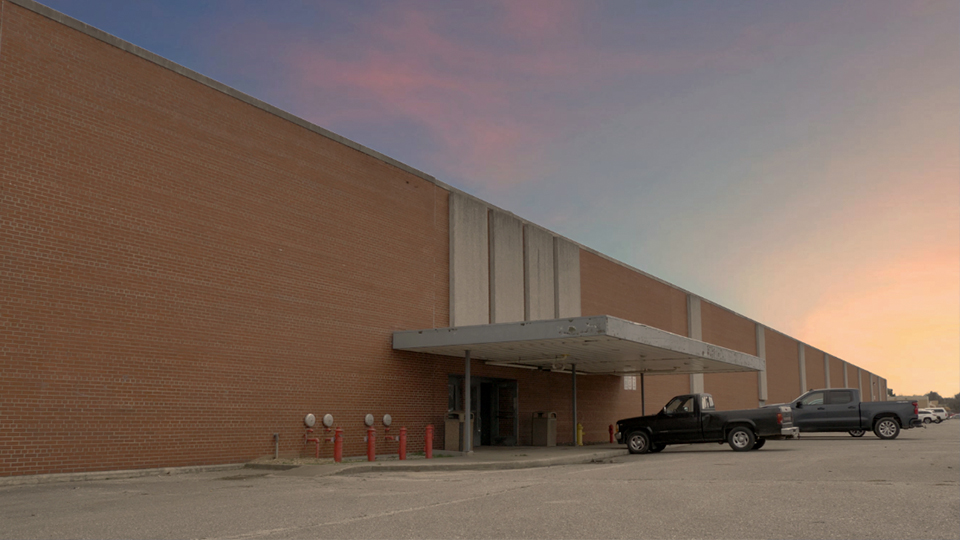Subscriber Benefit
As a subscriber you can listen to articles at work, in the car, or while you work out. Subscribe NowA subsidiary of Fishers-based American Resources Corp. has acquired a controlling interest in the former RCA Thomson plant in Marion, Indiana. ReElement Technologies LLC plans to invest a minimum of $100 million to convert the 425,000-square-foot facility, which was previously used to make television tubes, into a rare earth and battery material refinery that could eventually employ more than 300 people.
The plant sits on a 42-acre campus, which American Resources CEO Mark Jensen said will be redeveloped with the goal of bringing in additional companies in the lithium ion supply chain.
Jensen said the Marion location was chosen out of several potential sites in the Midwest.
“We were looking for an industrial site that had not only the attributes of the building we needed, but also the population—Marion’s and industrial community,” Jensen said. “Our technology is a very environmentally safe technology. So, given this is in the middle of Marion, it wasn’t a deterrent for us, given we don’t pollute the environment [and] we don’t discharge anything. And given the population there, the talent base that’s present there is substantial for what we need to do.”
The Marion location will be ReElement’s second facility outside of its location in Noblesville. Jensen said the Marion facility will allow the company to expand its efforts up to 20 times the work that is done in Noblesville.
ReElement works with industry partners to refine battery materials such as lithium, cobalt, manganese and nickel sourced from end-of-life batteries and manufacturing waste. Jensen said the company is one of only a few in the country that can produce ultra high purity lithium for the production of new batteries.
The company also refines rare earth elements sourced from end-of-life magnets, such as those found in high-efficiency motors, electric vehicles, wind turbines, power tools, and hard drives.
Renovations of the facility have already begun. Jensen said crews have gutted the former space and are now in the rebuilding phase. The goal is to begin installing equipment and hiring new employees by the end of the year.
“We’ll scale into it; we’ll build it smaller,” he said. “I mean, if there’s incentives that come on board on top of it, we’ll be able to move a lot faster and create a lot more jobs.”
ReElement plans to scale the plant up to an initially targeted production capacity of 5,000 metric tons of lithium hydroxide or carbonate per year, and 750 metric tons per year of rare earth oxides.
The property also has 250,000 square feet of additional foundation-ready space to expand production facilities or structures for further growth, according to the company.
“The campus is being designed to drive collaboration with industry partners in the battery and magnet supply chain by creating co-locating partners in the electrified value chain within the campus, reducing costs, maximizing productivity, and significantly reducing the carbon footprint of products produced,” ReElement said in a news release.
Without any local or state incentives, the company said it will create 30 jobs. However, if incentives are approved, that number could go beyond 300. Jensen said the company has been offered Tax Increment Financing, but that must still be approved by the Marion City Council.
He said the company would also entertain state incentives but did not specify if any have been offered.
Having incentive packages, Jensen said, would also be key to attract other companies in the supply chain to relocate to the Marion campus. One company, California-based American Lithium Energy, is being considered for such a move, particularly for the work it does with the U.S. Department of Defense and its suppliers.
“Most lithium ion batteries are combustible; if exposed to air and oxygen, they can cause problems,” Jensen said. “ALE’s designed some really cool stuff so that our warfighters, our soldiers can take penetrations of batteries and actually not have them explode. And now they’re going to commercial manufacturing scale. So they actually make the batteries that our lithium will go into and that, to me, is extremely exciting, because we need that from a nation we needed to have that security made domestically.”
Jensen said the company is excited about bringing jobs back to a community that once employed about 4,000 people at the old RCA plant. He said the quality of the building and the local resources create a “very attractive opportunity” for many years to come.
Please enable JavaScript to view this content.


Correction: the RCA Thomson plant in Marion was not a television assembly plant. It was used to make cathode-ray picture tubes for televisions in the pre-digital flat screen era. RCA television assembly was done at RCA Bloomington (and in offshore locations).